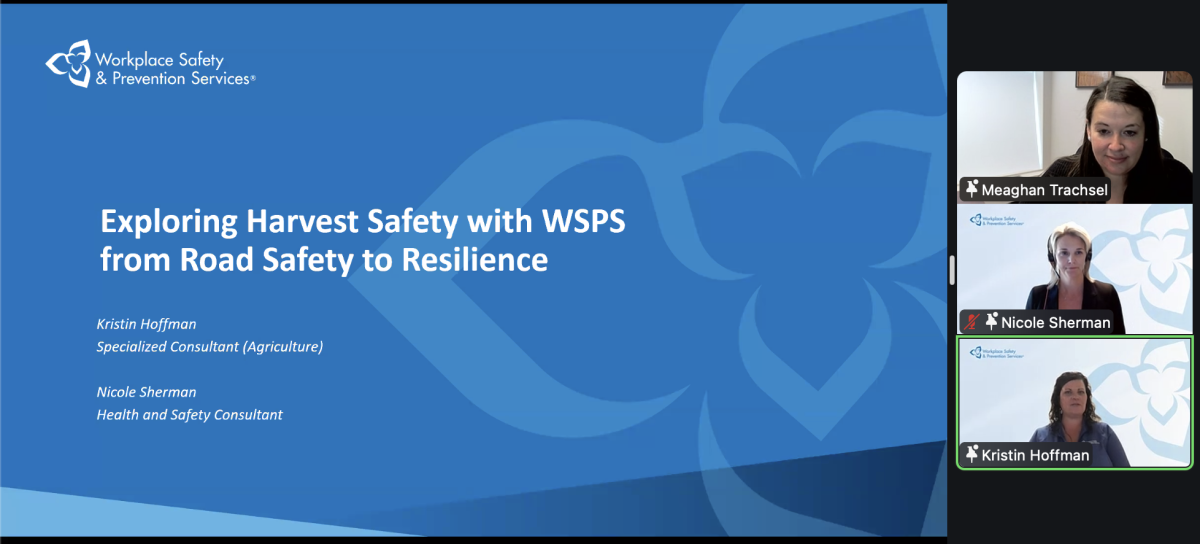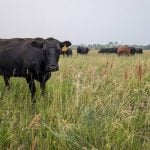It’s time for Canadian farms to plan ahead against the impact of interest rates expected to rise by as much as five per cent in the next five years, the Bank of Montreal (BMO) warns.
“It’s important that Canada’s agriculture industry takes steps now in planning for higher rate scenarios in three to five years just when the rest of the global economy is picking up and governments may not have an appetite for another bailout,” George Brinkman, the former chair of the department of food, agricultural and resource economics at the University of Guelph, said in a BMO outlook Thursday.
Read Also

Exploring Harvest Safety
Kristin Hoffman of WSPS explains measures for increased farm safety around harvest season
Brinkman, an expert in farm viability, suggested Canadian farm businesses should look to shed “unproductive assets” and develop business strategies to manage the impact of interest rates, which are expected to rise by as much as three to five per cent by 2015.
“Rising interest rates are the real vulnerability that Canadian farm businesses face today,” Brinkman said. “Many Canadian farmers are carrying an inordinate level of debt vis-a-vis comparable markets in the world.”
BMO’s economics department expects Canada’s economy to strengthen this year on the back of monetary and fiscal stimulus, but notes one consequence of the improved economic climate is that the Bank of Canada will likely continue raising overnight lending rates.
Interest rates are likely to increase “steadily but gradually: from the recently announced 0.5 to 3.25 per cent by the end of 2011 and to 4.25 per cent by the end of 2012, BMO said.
“Longer-term interest rates are likely to increase less than short-term rates, with the 10-year Government of Canada yield expected to climb from 3.4 per cent currently to 3.95 per cent by the end of this year and to 4.7 per cent by the end of 2011 and to 5.1 per cent by the end of 2012,” Sal Guatieri, a senior economist with BMO Capital Markets, said in the same release.
“Agribusinesses are advised to consider their financing and interest rate options sooner rather than later in order to take advantage of current historically low long-term borrowing costs.”
Nest egg
“BMO is encouraging farmers to review their longer-term interest rate strategies to avoid risks and leverage opportunities from interest rates,” David Rinneard, BMO Bank of Montreal’s national manager for agriculture, said in the same release.
Farmers, he said, should consider taking advantage of government programs such as AgriInvest which, through matching contributions from the government, help them build a nest egg when they are generating revenue for a reserve account to help weather volatility within their business cashflow.
“We’re at the beginning of a long-awaited growth cycle in the economy so it’s imperative your business is fit and tuned to leverage the opportunities that a healthy market presents,” Rinneard said. “But there are risks as well, especially if your capital is supported by high-cost debt. You have to get it right.”
That means developing a long-term business plan and reviewing capital structure, he said. “If interest rates increased three to five per cent, could your farm business meet its debt-servicing requirements?”
Farmers will also want to consider ways to improve debt-servicing capability by renting equipment and land or “selling off unproductive assets.”
Rinneard also urged farmers to avoid overcapitalization and extended interest-only loans and high debt, ensuring “every significant purchase is well thought out.”
He also suggested farmers develop and review their estate and retirement plans.
















